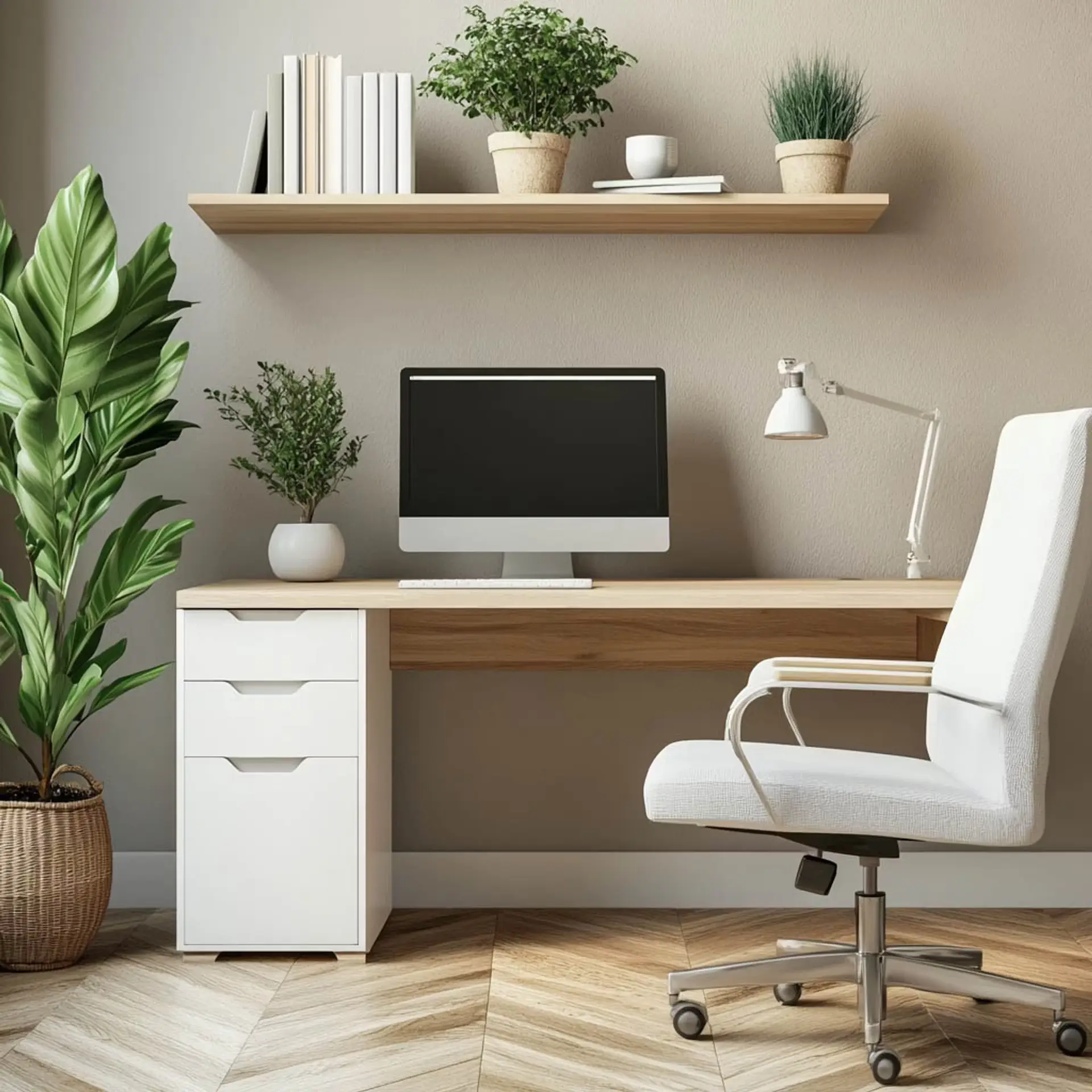As remote work becomes the new normal, having a well-designed home office is more important than ever. Whether you’re working full-time from home or just need a space for occasional tasks, your workspace should inspire productivity, reflect your personality, and provide comfort throughout the day. This guide dives into everything you need to know about home office design—from layout planning and furniture to lighting and style choices.
Why a Good Home Office Design Matters
The design of your home office can directly influence your performance and well-being. A cluttered, poorly lit space may drain your energy and reduce focus, while a thoughtfully arranged environment can increase productivity, creativity, and overall job satisfaction. A well-designed office helps separate work life from home life, giving you a physical and mental space to concentrate on your goals.
Start With the Right Location
Choosing the right location is the foundation of a functional home office. Ideally, it should be a quiet, well-lit area with minimal distractions. If you have a spare room, it’s the best choice for privacy. However, small apartments or homes without extra rooms can still accommodate great workspaces—consider converting a corner of your bedroom, living room, or even an unused closet into a compact office setup.
Furniture That Fits Your Needs
The furniture you select will define your workspace’s comfort and utility. A sturdy, ergonomic desk and chair are must-haves. Your desk should have enough surface area for your laptop, notepads, and any tools or accessories you frequently use. Height-adjustable desks are also popular for their flexibility and health benefits. Choose a chair that supports your back and promotes good posture, especially for long work sessions.
Incorporate smart storage options like shelves, drawers, or mobile filing cabinets to keep the space tidy. If you’re working with limited space, floating shelves and vertical storage can help maximize functionality without cluttering the floor.
Lighting: Natural and Artificial
Lighting plays a critical role in how you feel and function in your workspace. Natural light boosts mood and energy, so try to position your desk near a window. For evening hours or dimly lit rooms, combine overhead lighting with task lighting, such as a stylish desk lamp with adjustable brightness. Avoid harsh lighting or glare from screens, and opt for warm white LED bulbs to reduce eye strain.
Choose a Design Style That Inspires You
The aesthetics of your office can influence your mindset. Here are a few popular design styles you might consider:
- Modern Minimalist: Clean lines, neutral tones, and clutter-free surfaces help create a focused, distraction-free space.
- Scandinavian: Light wood, soft colors, and cozy textures bring warmth and simplicity.
- Industrial: Exposed materials like brick, metal, and reclaimed wood offer an edgy, creative feel.
- Bohemian: Layered textures, bold colors, and greenery make the space feel vibrant and personal.
- Traditional: Classic furniture and rich colors give the workspace a professional, grounded atmosphere.
Choose a style that reflects your personality but also helps you stay focused and comfortable during work hours.
Technology and Cable Management
In today’s digital world, a home office needs to be tech-friendly. Keep cables organized with cord clips, trays, or cable sleeves. Use a docking station or monitor riser to streamline your setup and reduce clutter. For virtual meetings, ensure you have a stable internet connection, a high-quality webcam, and good lighting. Consider adding noise-canceling headphones if your workspace is in a shared or noisy environment.
Add Personal Touches
Personalizing your home office can make it a space you enjoy spending time in. Add artwork, framed photos, or inspiring quotes to the walls. Place a plant or two on your desk to bring in a touch of nature—plants are known to reduce stress and improve air quality. Choose colors that promote your desired mood: blue for focus, green for calm, or yellow for creativity.
Even small items like a cozy rug, stylish storage baskets, or a personalized mug can make your workspace more inviting.
Make It Flexible
A good home office should be flexible and adaptable. You might need space for video calls, writing, designing, or reviewing paperwork. Consider movable furniture or multipurpose solutions, such as a desk that doubles as a craft station or a bookshelf that acts as a room divider. Keep your layout open to changes so it can evolve with your needs.
Ideas for Small Spaces
Not everyone has an entire room to dedicate to work, but that doesn’t mean you can’t create a great home office. Here are a few ideas for small-space setups:
- Floating Desks: Mounted to the wall to save floor space.
- Closet Office (“Cloffice”): A converted closet with a desk and shelving.
- Under-Stair Workstation: Utilize the space beneath staircases.
- Corner Nooks: Set up a small desk and lamp in a quiet corner.
With a bit of creativity and the right furniture, even the smallest area can become a functional workspace.
Final Thoughts
Designing a home office is about more than just furniture—it’s about creating a space that works for you. Whether you’re aiming for ultimate productivity, creative inspiration, or just a quiet place to focus, the right design can make all the difference. Keep your needs at the center of every decision, blend style with function, and don’t be afraid to personalize.
Also Read-Home Decoration For New Year
